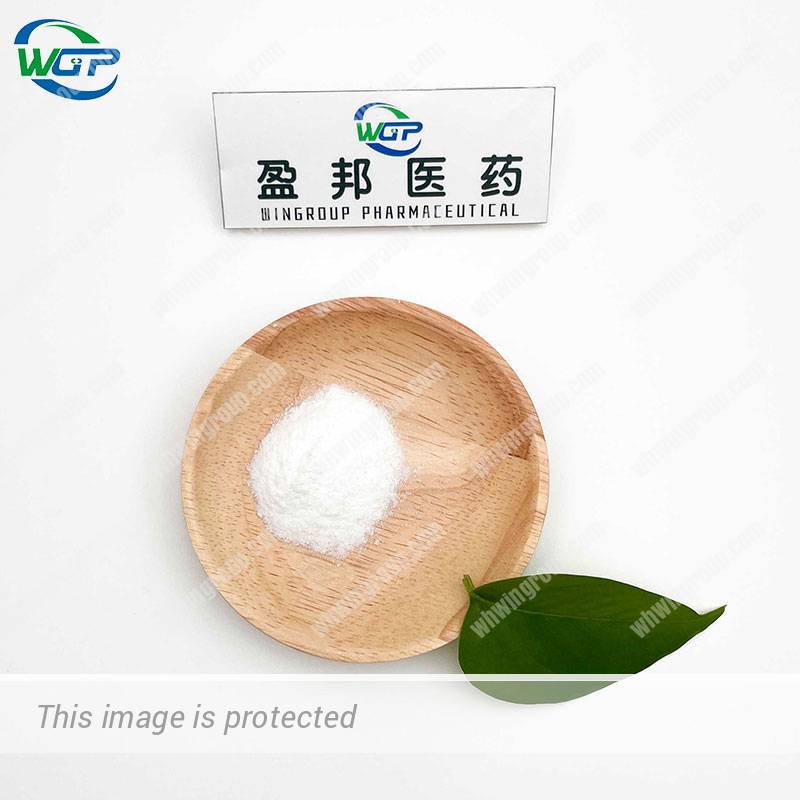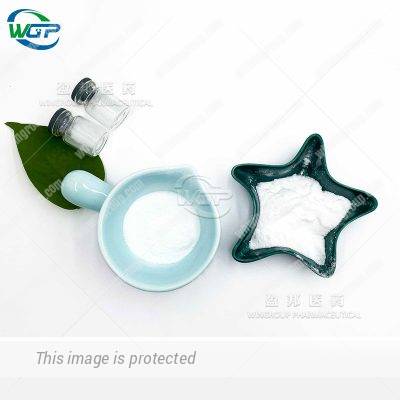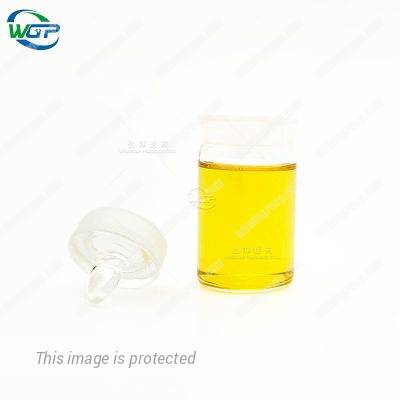Chlorhexidine Diacetate
CAS:56-95-1
MF:C26H38Cl2N10O4
ChEBI: Chlorhexidine acetate is the acetate salt of chlorhexidine. It is a disinfectant used for bacterial control in hospital, agricultural and domestic environments. It has a role as an antibacterial agent, an antiinfective agent, an antifungal agent and an antifouling biocide. It contains a chlorhexidine.
- Description
- Our Policy
- Additional information
Description
Chlorhexidine Diacetate CAS 56-95-1 Product Information
| Product Name: | Chlorhexidine Diacetate |
| Synonyms: | Chlorhexidine diacet;1,1’-hexamethylenebis(5-(p-chlorophenyl)-biguaniddiacetate;1,1’-hexamethylenebis(5-(p-chlorophenyl)biguanide)diacetate;1,6-bis(5-(p-chlorophenyl)biguandino)hexanediacetate;1,6-di(4’-chlorophenyldiguanidino)hexanediacetate;10,040diacetate;2,4,11,13-Tetraazatetradecanediimidamide,N,N’’-bis(4-chlorophenyl)-3,12-diimino-,diacetate;1,1′-HEXAMETHYLENEBIS[5-(P-CHLOROPHENYL)BIGUANIDE]) DIACETATE SALT |
| CAS NO: | 56-95-1 |
| Molecular Weight: | 625.55 |
| Molecular Formula: | C26H38Cl2N10O4 |
| solubility: | H2O: 15 mg/mL, clear |
| Melting point: | 153-156°C |
| storage temp: | 2-8°C |
| Appearance: | White to Almost white powder |
chlorhexidine diacetate vs chlorhexidine gluconate
Chlorhexidine is an antiseptic and disinfectant commonly used in healthcare settings. It is available in different salt forms, including chlorhexidine diacetate and chlorhexidine gluconate. These forms differ in the counterion used with the chlorhexidine molecule.
- Chlorhexidine Diacetate: In this form, chlorhexidine is paired with two molecules of acetic acid (HOAc) to form a salt. The chemical formula of chlorhexidine diacetate is C₂₂H₃₀Cl₂N₁₀·2CH₃COOH. It is commonly used in topical antiseptic formulations, such as creams, lotions, and solutions.
- Chlorhexidine Gluconate: In this form, chlorhexidine is paired with gluconic acid to form a salt. The chemical formula of chlorhexidine gluconate is C₂₂H₃₀Cl₂N₁₀·C₆H₁₂O₭. It is widely used as an active ingredient in various antiseptic products, such as mouthwashes, skin cleansers, and surgical scrubs.
Both chlorhexidine diacetate and chlorhexidine gluconate have broad-spectrum antimicrobial activity against bacteria, fungi, and some viruses. They work by disrupting the cell membranes of microorganisms, leading to their death or inhibition of growth.
The choice between chlorhexidine diacetate and chlorhexidine gluconate may depend on various factors, such as the specific formulation, intended use, and regulatory requirements. It is important to follow the instructions provided by healthcare professionals or the product label when using any chlorhexidine-based products.
chlorhexidine diacetate uses
Chlorhexidine diacetate is a salt form of chlorhexidine, which is an antiseptic and disinfectant commonly used in healthcare settings. Chlorhexidine diacetate has various uses, including:
- Skin Antisepsis: Chlorhexidine diacetate is used for preoperative skin preparation to reduce the risk of surgical site infections. It is applied to the skin before surgery to disinfect the surgical site and reduce the number of bacteria present.
- Wound Cleansing: Chlorhexidine diacetate can be used for cleansing and disinfecting wounds. It helps to prevent infection and promote wound healing.
- Medical Device Disinfection: Chlorhexidine diacetate is used for disinfecting medical devices, such as catheters, surgical instruments, and equipment. It helps to reduce the risk of healthcare-associated infections.
- Oral Care: Chlorhexidine diacetate is used in oral care products, such as mouthwashes and dental rinses. It helps to control dental plaque, prevent gum diseases, and maintain oral hygiene.
- Veterinary Applications: Chlorhexidine diacetate is used in veterinary medicine for various purposes, including wound management, skin disinfection, and oral hygiene in animals.
chlorhexidine diacetate vs gluconate
Chlorhexidine is an antiseptic and disinfectant that is commonly used in healthcare settings. It is available in different salt forms, including chlorhexidine diacetate and chlorhexidine gluconate. Here are some key differences between the two:
- Chemical Structure: Chlorhexidine diacetate is derived from chlorhexidine and is a salt form in which chlorhexidine is paired with two molecules of acetic acid (HOAc). On the other hand, chlorhexidine gluconate is a salt form in which chlorhexidine is paired with gluconic acid.
- Solubility: Chlorhexidine gluconate is more soluble in water compared to chlorhexidine diacetate. This solubility difference can affect the formulation and preparation of solutions or products containing these salts.
- Clinical Applications: Chlorhexidine gluconate is more commonly used in various antiseptic and disinfectant applications, such as skin disinfection, wound cleansing, and oral care. It is widely used in mouthwashes, dental rinses, surgical scrubs, and other formulations. Chlorhexidine diacetate, although less common, is also used for similar purposes, but it may be found in different formulations or specific applications.
- Concentration: The concentration of chlorhexidine gluconate used in formulations is typically higher compared to chlorhexidine diacetate. For example, chlorhexidine gluconate solutions for skin disinfection or wound cleansing may have concentrations ranging from 0.5% to 4%, while chlorhexidine diacetate may be used in lower concentrations.
| Transit time | You will normally receive your parcel within 7-15 working days after shipment (this may be delayed in special circumstances, such as Chinese New Year). |
| Receiving method | Generally we will send the goods by courier or special line, of course, if the goods themselves in the local warehouse have goods, also support self-pickup, depending on the circumstances. |
| Overseas warehouse | We have overseas warehouses in some European countries and Australia, such as Germany, Russia and Australia. |
| Delivery Method | WGP will ship via courier companies such as DHL, FedEx, UPS, TNT or EMS. |
| About After Sales | Within 7 days of your receipt of the goods if you find any problems with the goods (broken packaging, less hair, etc.) please feel free to contact our sales, we will help you deal with it in time. |
Additional information
| Melting Point | 153-156°C |
|---|---|
| Solubility | H2O: 15 mg/mL, clear |
| Color | White |
| Form | Powder |








Reviews
There are no reviews yet.